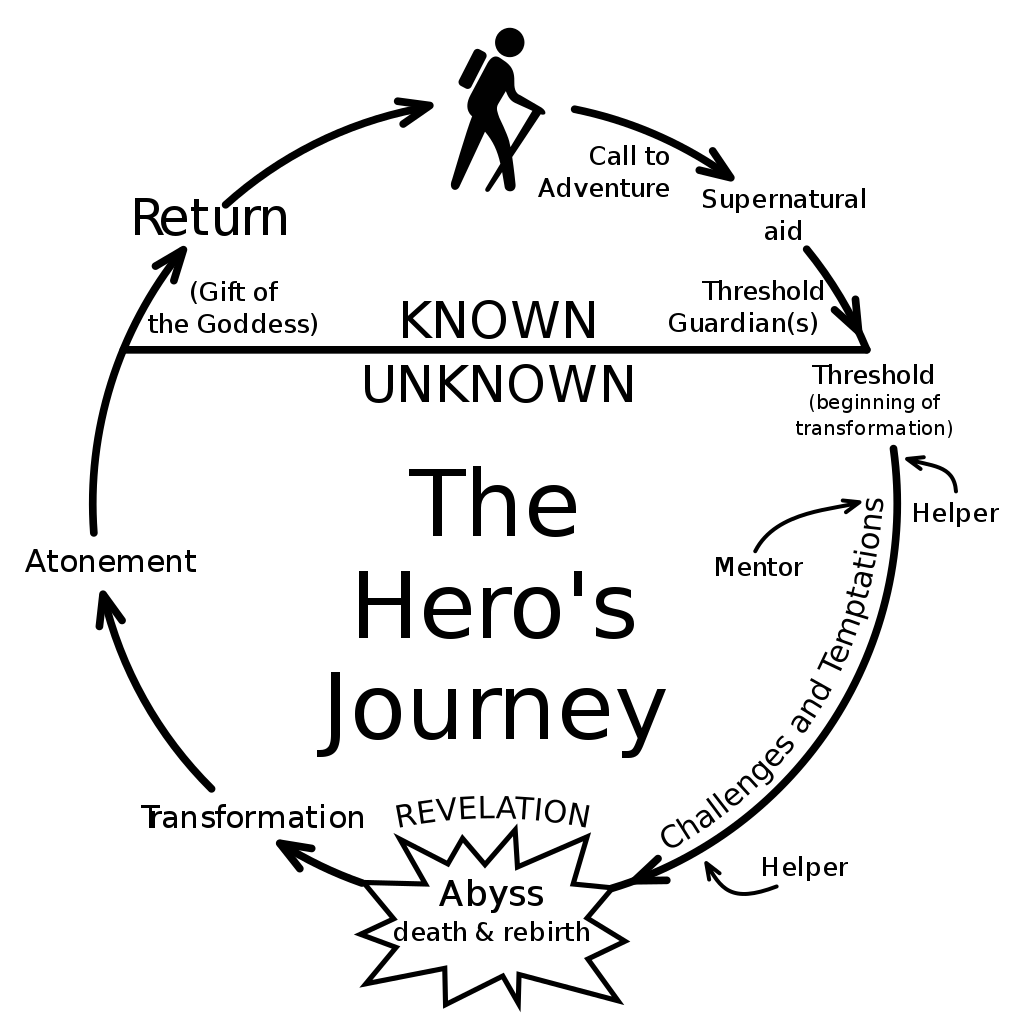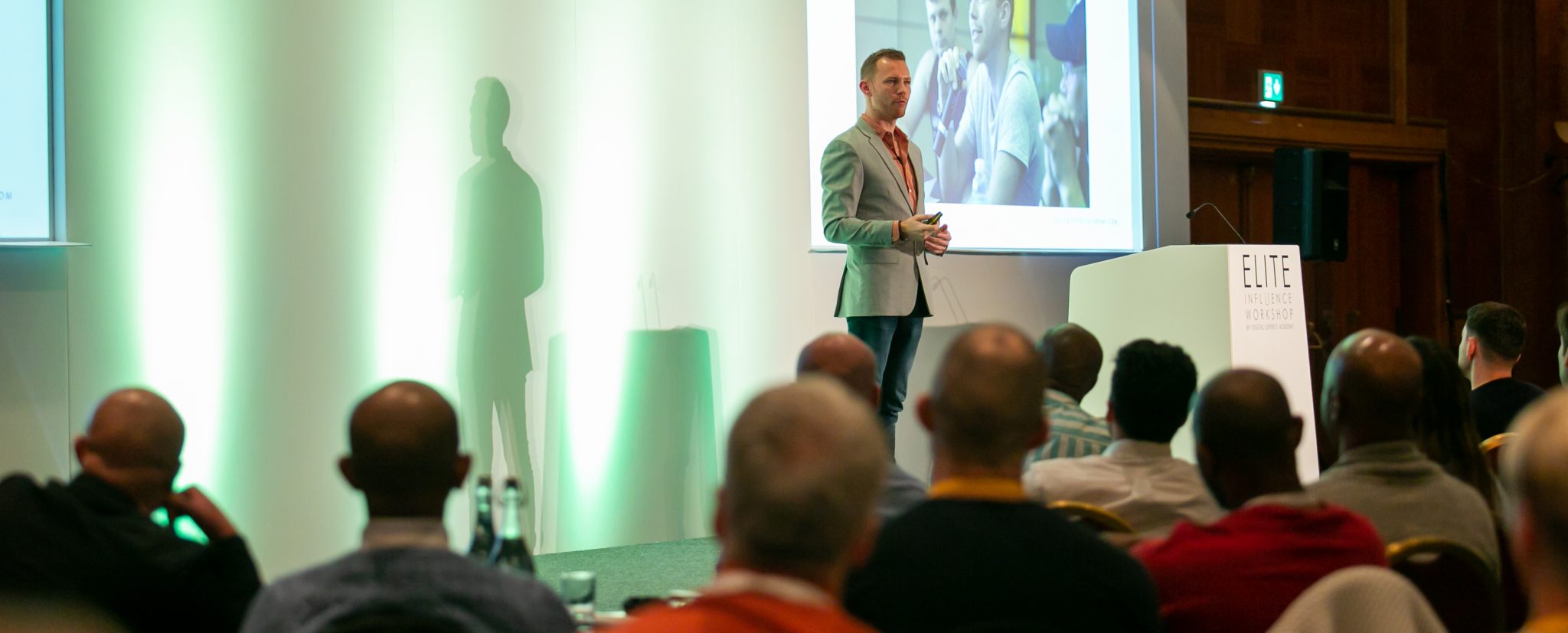In this article (and the video above) we’re gonna cover exactly how to write a video script for YouTube and this is gonna be more specifically for paid marketing. So if you wanna create highly-targeted paid marketing campaigns with a powerful script that captivates and motivates and influences your audience to take action then this is for you.

So where do we start
There are two things that are super important to get right, the first one is your ideal customer avatar. You’ve gotta get crystal clear about who is that you’re targeting and when you’re answering this it’s looking at it through their pains, problems, and fears because that is what creates connection in human beings. That is where you can influence and empower people to find the solutions or to use your solutions to their pains and problems.
You know if I just reel off a whole lot of logical reasons why, like I’m really good, and online business is really great and here’s why my training is awesome and click here and enter your email address and buy now, or whatever. There’s no connection in that. There’s no trust. There’s no relationship.
There’s no rapport. There’s nothing that would enable you to feel that I understand where you’re coming from, that I understand what you’re going through.















Get clear about your customer avatar
About their pains, their problems, their fears, and start building your script around that. It enables you to meet someone where they’re at and connect with them on a level where if you can get to the point where they feel that you understand their problems better than they do, that is exactly when they are ready for the solution that you’re gonna present to those problems.
Getting crystal clear about who it is that you’re talking to and who your products, or services helps, but through their pains, problems, and fears, is the first part of developing a powerful script that is gonna move people to take action. And then the second part, off the back of that, is gonna be your targeting.
So getting in the mind what are they doing on YouTube, what are they typing on YouTube, to try to solve that particular pain or problem. And again, if you can get in their space, you get in the mind of where they’re at.















Go through your customer’s journey
Actually search on YouTube as if you were them. So let’s say for example they’re sick to death of their career and they wanna get out the corporate rat race, but they don’t know how. And so they might talk on YouTube ‘how to quit your career’. Then look at what comes up and maybe it’s property, maybe it’s forex trading, maybe it’s online business and they might start looking at a number of different solutions.
When they start looking at those solutions, if you were doing that as them, you actually go through this process. What questions, what objections, what reasons not to start might pop into their head. Take property as an example, you might think well this is all well and good, but I didn’t have that much capital to invest so property is not right. Or forex, they might start thinking, wait, hold on, does that mean I need to sit and look at charts all day because I can’t I’ve got a full-time job, like that’s not gonna be possible for me. Online business, what reservations and fears come up then?
The point is that if you can meet somebody at that point in their journey, and connect with them where they’re at based on their fears, their problems, their pains, and then handle those objections at the right moment. That’s exactly where you’re using your targeting to meet someone with the right message at the right time.
So once I’ve got that sorted and I’m crystal clear about my avatar and about the targeting that I’m gonna use for this particular video, to get in front of my avatar I use a specific writing structure.















The Hero’s Journey
Now if you’re not familiar with the hero’s journey you can just search YouTube for Joseph Campbell Hero’s Journey. It follows a particular story narrative, and that narrative connects with human beings on a very deep emotional level, it’s how we resonate with stories and relate to stories and have done for thousands of years.



I start the video with a statement, a question, something that will qualify, or disqualify people, from the word go. So for example I might say, I always got a huge amount of value from Tony Robbins, from his books and from his events, but I wasn’t able to start my first online business until I mastered one thing which I never got from any of his stuff. And when I did it changed my life forever and I’m gonna tell you what that is right now.


















I start the video with a statement
Or question, something that will qualify, or disqualify people, from the word go. So for example I might say, I always got a huge amount of value from Tony Robbins, from his books and from his events, but I wasn’t able to start my first online business until I mastered one thing which I never got from any of his stuff. And when I did it changed my life forever and I’m gonna tell you what that is right now.
So that would be an example of a 10-second hook which is both something that creates curiosity and intrigue and it also disqualifies people who aren’t interested. Because I don’t want people watching my videos that are in no way the right sort of prospect for me.
Now if my targeting’s right from the word go, a lot of the people that are watching are gonna be the right sort of audience, but you’re still gonna get people who aren’t. From the word go this disqualifier tells someone watching knows that I’m gonna start talking about online business, and if they’re in no way interested in that whatsoever, then they’re gonna skip out which means that I don’t pay for the view.















You’ve got 10 seconds to get someone to escape otherwise if it’s more than 10 seconds then you pay for the view which is fine it’s only pence, or cents. But you still wanna make sure that the people watching are doing it for the right reasons because that’s gonna improve your engagement rate, your click-through rate, and your opt-in rate, which shows as a higher quality video which means your rank goes up which means you’re more likely to show in front of other advertisers.















The second part after the disqualifier
Is to show someone that you understand their problems, their pains and fears better than they do, and you highlight to them the implications of them not solving their pains and problems and off the back of that you create an epiphany within someone.
If you can create an epiphany where they realise something, or they think of something that clicks in their mind that they’ve never thought of before, where they’re like, oh my goodness this guy’s right, and they’re often going to the solution that didn’t work before going to the solution that did work.
And what this means is that the solution that didn’t work is typically where you’re preempting objections that might come up for them at that point. For example if you’re talking about the pains and problems of being trapped in a corporate career and feeling suddenly unfulfilled and sacrificing your whole life to build your bosses dreams instead of your own.
If you’re then talking about how you looked up property, and you looked at starting your own brick and mortar business, you looked at franchises, you looked at forex, and none of these things worked because you didn’t have the capital and you had a full-time job that you still had to work to pay the bills.















How do we know which objections to handle?
Typically you’ll be preempting objections that might come up as a result of the solution that didn’t work. For example if you’re talking about the pains and problems of being trapped in a corporate career and feeling suddenly unfulfilled and sacrificing your whole life to build your bosses dreams instead of your own.
If you’re then talking about how you looked up property, and you looked at starting your own brick and mortar business, you looked at franchises, you looked at forex, and none of these things worked because you didn’t have the capital and you had a full-time job that you still had to work to pay the bills.















So that would be an example of the solution that did work. And then you’re gonna talk about the result of that solution. And then an example of that could be, 12 months after starting I was able to quit my job, I was able to then start doing what I wanted to do which for me at that point was travelling and getting it out of my system and then really start focusing on building businesses and creating the kind of life that I wanted to live.
After that you’re then gonna go into the finer point of handling or preempting any objections that might come up. So again, at this point like where’s their mind at? Is it scepticism? Is it doubt and lack of belief in themselves? Is it, I don’t have the time, I don’t have the tech skills, I’m too old or whatever it is. So if you can at that point say, or throw in something that preemptively handles objections.
For example, I didn’t think I had the time from the start, but I’m so glad that I went for it because all it took was a couple of hours in the evenings to really start making progress. Or if you were preempting scepticism you might say something like, I remember when I began I was super sceptical from the word go, but I’m so glad that I was able to overcome that because if I didn’t then I wouldn’t be where I am today.
Take I don’t have the tech skills as another example. It might be something like, and I was a complete amateur with technology when I first started and I had no idea how to do any of the things you’d associate with online business. But when I went through the education I discovered that I didn’t need to be a tech wizard. All it took was for me to have basic skills of how to use a computer and then I could learn the skills required.
And with the community, and the education, and the mentors, that was exactly the environment that I needed to learn the skills, just like learning to drive, it was no different.















Top tip
If you already have customers your customers are your best source so speak to your customers and they are your best way to discover what the main objections are in the front end of your business. When people are feeling that resistance to buying your products or service, what’s the main reason that they’re always giving you about, why they’re not ready to purchase, or why they feel that it’s not for them, or something like that. If you can preemptively handle that right at the start in your ads at the moment they first come up with it, because you’re meeting them where they’re at, that is a very, very powerful thing to do.















So if the thought pops into their head of, oh yeah, this sounds good, but I don’t have the time, and then you immediately at that point in the video are saying, you know what I actually thought I didn’t have the time, but what I realised was da, da, da, da, da, da, da, that oh, okay, well, well that makes sense then, this guy’s talking sense so I think I might give it a go as well. He sounds like he gets what I’m going through and where I’m coming from so let’s take action on seeing what he’s about.















The final point
The call to action. So in the call to action what you’re doing is you’re relating the journey into the call to action, from the pains and the problems through the solution and the result. For example you’d say something like, so that if any of this is resonating, if it sounds like you then just below this video you’re gonna see a link to click which will take you through to my website where you can enter your name and email to access exactly the same education that took me from being unfulfilled, unhappy, and miserable working 60 to 70 hours in a career I didn’t like into having the freedom to create and build my own life that I truly wanted to live. So click below, enter your name and email address and I’ll see you on the other side. Bye for now.
So that would be a typical structure for call to action that took me from pain into solution. Okay, obviously there is, this is not like a black and white hard and fast only way to shoot and script a video ad. There’s many different formulas, many different marketers and business owners who use different structures, but that’s the structure that I’ve typically used throughout most of my stuff over the last three years or so.















Quick recap
You’ve got the disqualifier at the start, you’ve got the pains and problems, and then the implications of the pains and problems and you wanna try and hit an epiphany within your target market. Then you’ve got the solution that didn’t work, the solution that did work, the result of going through the solution, any objections, so objection handling before your call to action right at the end.
That’s my process for scripting a video. If you write your script within that structure and you hit those points powerfully there’s some other things that you can do, which I won’t go through on this article, to do with NLP and language of influence and so on and so forth, we’ll do another article on that another time.















One final piece of advice
If you’ve got a camera like my Osmo which doesn’t have the abilities to put a teleprompter on it. I’ll often put an iPad behind, right behind the lens and then I’ll use a teleprompter app where then my script will scroll up, so I’m always focusing on a point that’s like behind the lens of the camera so it looks like I’m looking into the camera, but I’m actually looking through it and I can read the script.

















That’s good stuff, thank you Dan!
Hey Dan what up! Awesome stuff! I learned so much from this video! Top man!